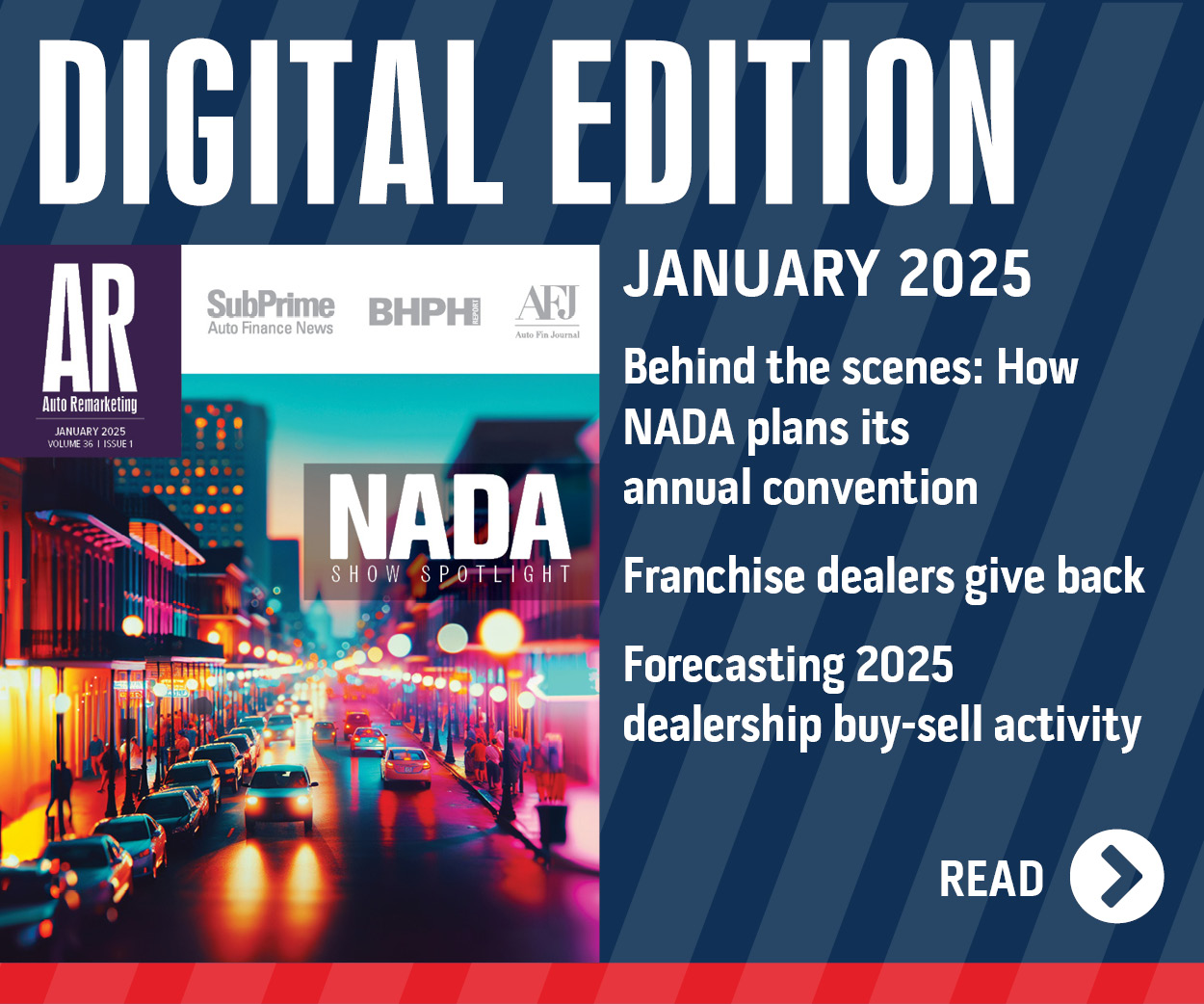J.D. Power & Edmunds.com Explore How Incentives Altered June Sales Projections

Analysts from J.D. Power and Associates and Edmunds.com each gave their latest projections about where June’s SAAR might land, touching on how incentive levels greatly swayed their estimations.
J.D. Power indicated Thursday the pace of new-vehicle retail sales cooled during the third week of June, after exhibiting a stronger pace during the first two weeks of the month.
As a result, J.D. Power pegged the June SAAR to come in below 9.8 million units but still nearly 500,000 units better than May. The total light-vehicle selling rate is expected to be below 12 million units for the second straight month.
“Sales in June typically face pressure from being between two strong selling holidays — Memorial Day and Independence Day — but incentive levels $500 below the first-quarter average and depleted vehicle inventory have added to the pressure as the month progressed,” explained Jeff Schuster, executive director of global forecasting at J.D. Power.
“However, the fundamentals remain in place for a marked return to the recovery pace set in the first four months of the year,” Schuster continued.
Meanwhile, Edmunds.com chief executive officer Jeremy Anwyl indicated that his site projected June’s SAAR to be 11.8 million.
“This one will be tricky to get right, though, partially due to quirks in the calendar but largely because market reaction from manufacturer price increases, and supply disruptions still are playing out,” Anwyl acknowledged.
To explain this stance, Anwyl noted that he first began by looking at the actual number of vehicles available for sale on dealer lots.
“The number stopped declining in the last week of May, but it still has not started to increase,” he pointed out.
“For some models, it was even still dropping; good luck getting a Toyota Prius,” Anwyl continued. “The inventory situation is significant. Prices were starting to drop by mid May, but that movement has mostly stalled. Some prices have even increased — a trend that is not good for sales."
Like J.D. Power’s Schuster, Edmunds.com highlighted incentive activity, accentuating the recent strategy employed by Toyota and Honda.
Edmunds.com contends increased incentive spending in June by Toyota and Honda indicate that the two Japanese automakers are “turning a corner with their respective production issues.”
Site analysts calculated based on their True Cost of Incentives that incentive spending by Toyota increased 30.5 percent to $1,631 per vehicle from May to June. Honda, meanwhile, boosted its average spending by 4 percent to $1,023 per vehicle over the same period.
The incentives jump by both automakers comes just one month after Edmunds.com found that Toyota and Honda’s spending fell 26 percent and 46 percent, respectively, in May.
“By kicking up their incentive spending, Toyota and Honda are sending a clear message that production levels are starting to return, even if those vehicles haven’t yet hit dealer lots,” noted Jessica Caldwell, director of industry analysis at Edmunds.com.
“Honda, for example, introduced its ‘Honda Promise’ program which lets car buyers lock in incentives on a new car now, even if the car can’t be delivered for another several weeks,” Caldwell continued. “With this program, Honda is not only demonstrating a confidence in its recovery, but also making a strong play to protect its market share.”
Anwyl expanded on Caldwell’s points in an attempt to further answer why Toyota and Honda evidently have returned to aggressively pushing incentives.
“Clearly, the two companies’ sharply reduced late-April and early-May sales shocked them into action,” Anwyl surmised. “And both companies now have more vehicles on the way. But with low levels of dealer inventory, sales gains in June nonetheless will be limited.
“Complicating this, some current incentives can be applied to ordered vehicles,” he went on to say. “These ‘sales’ won’t be reported until the vehicle is delivered. If the number of these ordered vehicles is significant, forecasting could get even harder.”
However, Edmunds.com doesn’t believe this scenario will play out.
“First, the incentives are not so rich that consumers will feel compelled to jump in,” Anwyl offered. “Second, most customers prefer to take delivery when handing over a check.
“Moreover, customers who partake most likely are committed buyers who would have waited, anyway,” he added.
A Look at Overall June Incentive Levels
Edmunds.com found that overall spending by all Japanese automakers increased 9.1 percent from May to June to $1,510 per vehicle.
By comparison, the site said South Korean automakers decreased their spending a total of 8.2 percent over the same period, to $1,212 per vehicle.
Analysts also discovered American automakers upped the spending needle 0.2 percent to $2,799 per vehicle, and European automakers boosted spending 5 percent to $1,961 per vehicle.
Industry-wide, incentives climbed two percent in June to $2,165 per vehicle, according to Edmunds.com
“Despite the increases, overall incentive spending across the automotive industry continued at a very conservative pace in June,” Caldwell stated. “We haven’t seen a run of spending this low in almost a decade.”
Edmunds.com reiterated that its monthly True Cost of Incentives report takes into account all automakers’ various U.S. incentives programs, including subvented interest rates and lease programs, as well as cash rebates to consumers and dealers.
To ensure the greatest possible accuracy, Edmunds.com bases its calculations on sales volume, including the mix of vehicle makes and models for each month, as well as on the proportion of vehicles for which each type of incentive was used, analysts explained.
Automotive Incentive Spending, by Manufacturer
Normal
0
false
false
false
EN-US
X-NONE
X-NONE
/* Style Definitions */
table.MsoNormalTable
{mso-style-name:”Table Normal”;
mso-tstyle-rowband-size:0;
mso-tstyle-colband-size:0;
mso-style-noshow:yes;
mso-style-priority:99;
mso-style-qformat:yes;
mso-style-parent:””;
mso-padding-alt:0in 5.4pt 0in 5.4pt;
mso-para-margin-top:0in;
mso-para-margin-right:0in;
mso-para-margin-bottom:10.0pt;
mso-para-margin-left:0in;
line-height:115%;
mso-pagination:widow-orphan;
font-size:12.0pt;
mso-bidi-font-size:11.0pt;
font-family:”Times New Roman”,”serif”;
mso-bidi-font-family:”Times New Roman”;
mso-bidi-theme-font:minor-bidi;}
|
Manufacturer |
Jun-11 |
May-11 |
Jun-10 |
Jun-11 vs. May-11 |
Jun-11 vs. Jun-10 |
|
Chrysler |
$2,520 |
$2,400 |
$3,259 |
5.0% |
-22.7% |
|
Ford |
$2,745 |
$2,475 |
$3,182 |
10.9% |
-13.7% |
|
GM |
$2,966 |
$3,245 |
$3,893 |
-8.6% |
-23.8% |
|
Honda |
$1,023 |
$983 |
$1,489 |
4.1% |
-31.3% |
|
Nissan |
$2,027 |
$2,221 |
$2,594 |
-8.7% |
-21.9% |
|
Toyota |
$1,631 |
$1,250 |
$2,141 |
30.5% |
-23.8% |
|
Industry |
$2,165 |
$2,122 |
$2,690 |
2.0% |
-19.5% |
Final Notes about June Projections
Meanwhile, Anwyl wrapped his discussion up about June new-vehicle sales by making two additional points.
“Inventory levels only tell a part of the story,” Anwyl cautioned. “Tracking demand versus inventory shows the domestic automakers are in ‘worse’ shape than the Japanese.”
Anwyl insisted Ford, in particular, stands out.
“‘Worse’ in this case, is from the customer perspective,” he stressed. “However, Ford and its dealers surely view low inventory and high demand as a high-grade problem.”
Lastly, the Edmunds.com CEO touched on this year’s calendar fluke.
“The Fourth of July weekend typically is a significant sales event, and the ramp-up to the holiday weekend usually adds some month-end lift to June,” he said. “But this year, the Fourth of July is on a Monday, so we see any potential June sales lift as being lower than normal and fully reported in July.”

 View The Latest Edition
View The Latest Edition

